#erich kettelhut
Explore tagged Tumblr posts
Text







The concept art of Erich Kettelhut for Metropolis (1927), dir. Fritz Lang
1K notes
·
View notes
Photo
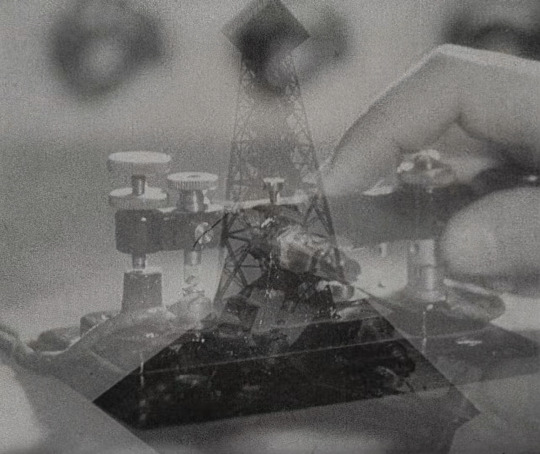

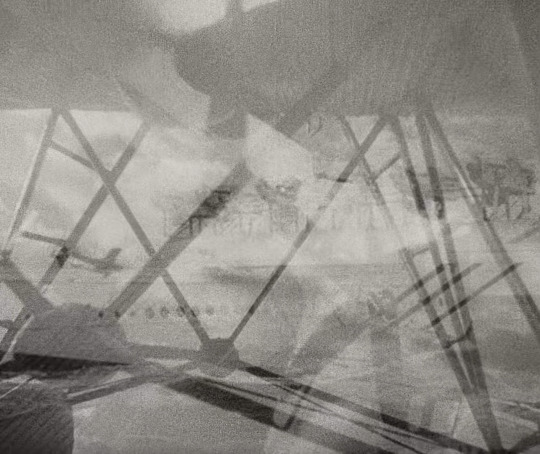



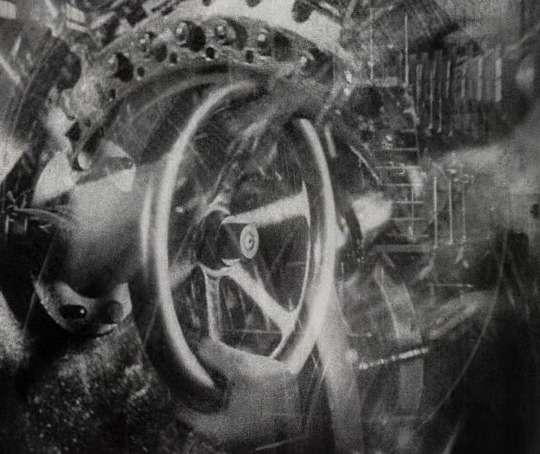

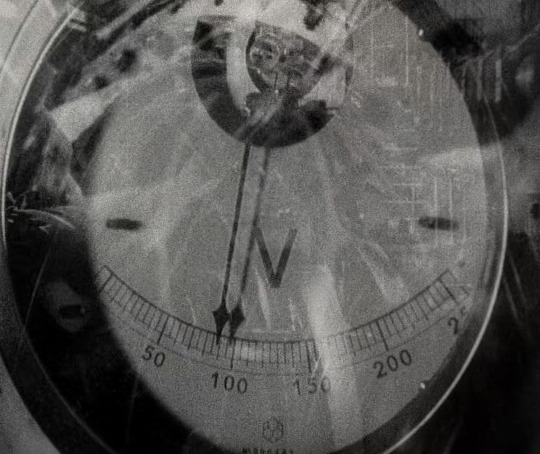
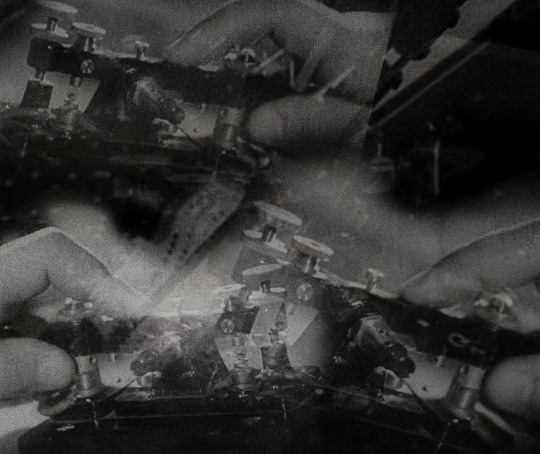
F.P.1 Doesn't Answer (Karl Hartl, 1932).
#f.p.1 doesn't answer (1932)#f.p.1 doesn't answer#karl hartl#f.p.1 antwortet nicht#günther rittau#willy zeyn#albert berthold henninger#erich kettelhut#konstantin irmen-tschet#theo nischwitz
19 notes
·
View notes
Photo

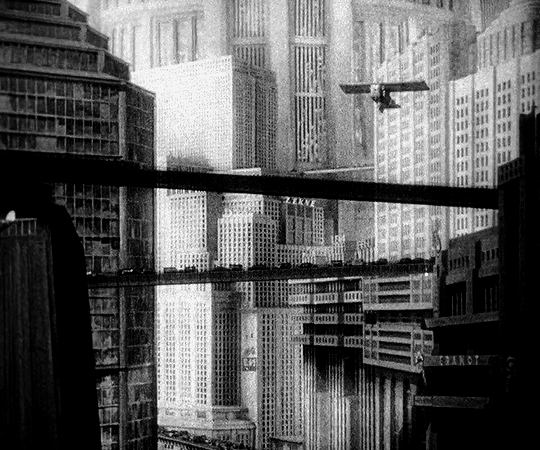
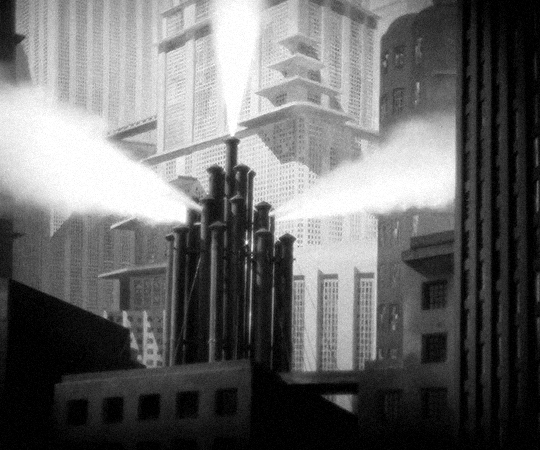
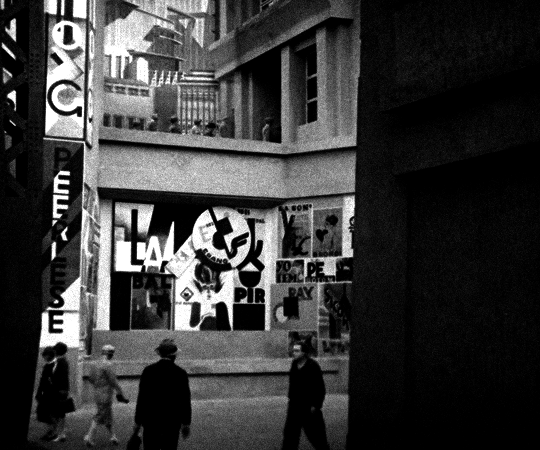
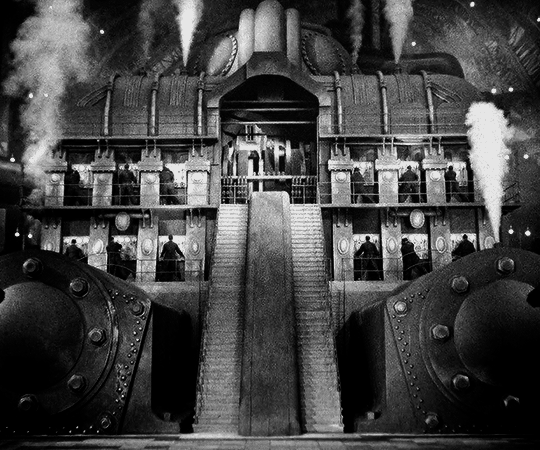


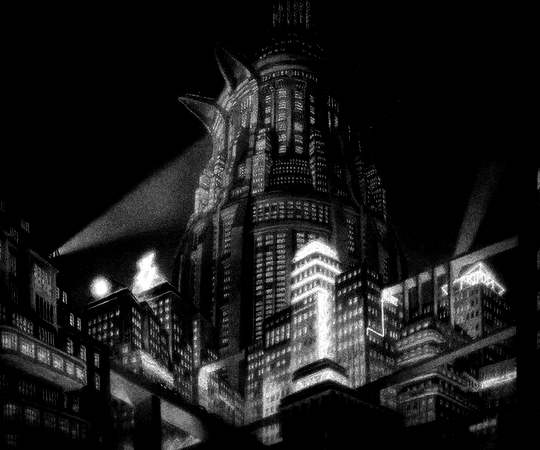
'Fritz Lang's production designers—Erich Kettelhut, Otto Hunte and Kurt Vollbrecht—shaped the fictional city of Metropolis by re-imagining contemporary Manhattan. [T]hey spliced the city with buildings inspired by avant-garde European architects—among them, Cubist architects from the Bauhaus School; expressionists, like Erich Mendelsohn; Le Corbusier, with his vision of high-rise cities; and ... the Italian Futurist Antonio Sant'Elia, whose "Città Nuova," presented his future city as a multi-level megastructure shot through with daring interconnecting bridges and vertiginous aerial walkways.' (CNN)
THE BUILT ENVIRONMENT IN MEDIA — METROPOLIS (1927), dir. Fritz Lang
#cw flashing#* the built environment in media#metropolis#fritz lang#filmedit#filmgifs#movieedit#moviegifs#scifiedit#worldcinemaedit#classicfilmedit#fyeahmovies#dailyflicks#classicfilmblr#classicfilmsource#cinemaspast#cinematv#userfilm#userstream#mygifs#bbqueue#the graaaaain on these#the grainnnn
3K notes
·
View notes
Text
rubbing my forehead to cope with reading an article where the author claims Zaibach is like the USSR. unnngggghhhhhh only if the USSR resembled ridley scott's 1984 apple ad, lol.
well, aside from the deutschy name and being inspired by industrial revolution era england— a colonial power— headed by a protestant english symbol of western thought creating the world as he wants/understands it straight from the 1700s to 1996, i see the show as using his belief that god must necessarily have a hand in driving the natural world (Newton insisted that divine intervention would eventually be required to reform the [planetary] system, due to the slow growth of instabilities) extrapolated to him eventually viewing himself as such a god. but forgetting all of that,
Zaibach

i think the name is mostly nonsense, but fwiw the hebrew verb "zabach" primarily means to sacrifice or to slaughter, particularly in the context of offering an animal to God as an act of worship.
Metropolis (1927) concept art by erich kettelhut

Zaibach

Metropolis was made during the era of the weimar republic (the german reich.) things were really shit because of WWI, then oh! prosperity! while the resentment and hatred from the right boiled, then the great depression ended that prosperity, then the nazis came into official power. Metropolis is known for having been greatly edited (endlessly recut and with versions lost) such attempts in part were to remove the communist-sympathising subtext in a film about a false and fairly explicitly german utopia— inspired too by the tower of babel and 1920s new york skyline— for the wealthy elite... wherein those same elite plot and scheme to construct clever events to keep themselves in power and remove the need for workers at all by destroying them and relying instead on machines (see: the great worker riot of 2026.) don't get me wrong though— there's plenty to criticise about Metropolis, much of it coming from Lang himself.
there are 3 major, interconnected machines which run the city. this one is called The Heart Machine.

the "Heart Machine", which is the central dynamo that generates most of the power to the entire city. Every day it produces an average of 1000 megawatts of power that is transferred through various power nodes throughout the machine room complex. The machine has run non-stop for 25 years with the exception of pausing for preventive maintenance. Unlike most equipment build in the late 1900s to the 2020s, these machines were built not to be replaced. The heart of the city system was built by Fellar, Inc. and came with a price tag of 78.7 million M.
The Heart Machine is under the charge of one man, Grot, a worker who has maneuvered his way up through the ranks by "helping" uncover covert information about the workers.
(from here)

Metropolis, osamu tezuka
also, if you're interested in the approach to design—
The film's use of art deco architecture was highly influential, and has been reported to have contributed to the style's subsequent popularity in Europe and America.
art deco had no goal or philosophy of restructuring society/lifestyle. it glamourised the industrial revolution, moreover the opulence that everyone but the workers enjoyed, seeking to symbolise wealth and sophistication and rejection of tradition. Art Deco design exemplified opulent consumption, crass commercialism, and the acceleration of contemporary life summed up in the Futurist credo "Speed is beauty." (here. also would like to add that most? all? in the futurist movement were italian fascists who went and died in the war, effectively killing the futurist movement too.) however, in america, whose infrastructure was impacted far less by the war than europe, the style continued almost seamlessly into the new international movement— such is the case with any decade and its trappings; there's no actual definitive beginning or end to an era, especially for poorer people (whose customs and ideas are upcycled by the wealthy.) all of this art was continued or discontinued more randomly than that. ftr though i'm using generalities as opposed to finer details here only for the purpose of discussing what/how things appear in Escaflowne.
the exterior of Zaibach is more art deco while the interior, as well as that of Escaflowne itself, are from the movement of the pre-WWI art nouveau— since they're both related to Atlantis/draconians, who within the series have the strongest association with art nouveau as if a symbol of their elegant idealism, that makes sense. art nouveau sought to establish a "synthesis of the arts" (Gesamtkunstwerk) breaking down the previously firm distinction between fine art and applied art— incorporating the lushness and assymetry of nature into architecture, stained glass, metalwork, etc. etc., allowing rooms and practical/functional objects to "become" art as well, with the same approach as illustrations. it also should be said that art nouveau pulled heavily from japanese prints, as seen previously in the orientalist """japonisme.'"""




hôtel tassel, the peacock room, myst III exile
Decorative artists experienced a rise in status following the turn of the century; similarly, a rise in wealth and social as well as technological progress gave birth to the widespread luxury industry. This golden combination solidified the Art Deco movement.
William Morris, the founder of the art nouveau arts & crafts movement in england, was a staunch revolutionary socialist/anti-imperialist. he believed one should "have nothing in your houses that you do not know to be useful or believe to be beautiful." according to him, the main goals of the movement were "to give people pleasure in the things they must perforce use, that is one great office of decoration; to give people pleasure in the things they must perforce make, that is the other use of it." during a time which saw the beginnings of mass-production, the intended effect of this was to restructure a person's relationship to even the mundane items in their possession (see: commodity fetishism) and in that process, exposure to and relationship to art.
art deco suffered heavily during the aforementioned great depression because the materials to make it were no longer affordable and the labour classes exploited for other means. so i view it as... dornkirk claims he did all the shit himself but we know he's building on these ancient ideas and amassing/hoarding resources to achieve this, and he's keeping these organic forms— as representative of the natural world and part of that world being humanity— for himself exclusively as he burns the world down. however, we're not moralising art here, just as fritz lang regretted focusing on the moral over the social. escaflowne is also a weapon of war and must be put to rest as part of van's own break from punitive tradition.

ultimately, what we see in Escaflowne is people— while retaining any surface-level, or even essential and difficult differences, made even more clear by the sheer amount of different cultures/customs to which we're exposed— changing the calamitous course of fate when committed to a common goal, quintessentially represented by communal, mutual love and respect. i would say that's much more communist than what Zaibach represents.
#escaflowne#i think it's sort of fucked to assume any japanese artist— but esp the people who made gundam— don't consider this stuff.#like art/history/art history is the purview of the west exclusively and not applicable to fantasy anime somehow#maybe it's not that deep but it's certainly not unthought or vapid
15 notes
·
View notes
Text














Metropolis (1927) Director: Fritz Lang Cinematography: Karl Freund, Günther Rittau, Walter Ruttmann Art Direction: Otto Hunte, Erich Kettelhut, Karl Vollbrecht
#cinematography#film stills#movie stills#metropolis#metropolis 1927#fritz lang#scifi#science fiction#german expressionism#are the germans ok
126 notes
·
View notes
Text

Artwork for ’Metropolis’ dir. by Fritz Lang; 1927.
The city shots of Metropolis were a combination of both two and three dimensional elements, consisting of matte drawings and paintings, flat wooden relief models, and three dimensional models scaled to 1/16th of the simulated heights. All matte drawings of the cityscape were scaled to a height of 1/100. The man responsible for most of the film’s models was Walter Schuzle-Mittendorf. The set designers- Otto Hunte, Erich Kettelhut and Karl Vollbrecht- first created a number of concept drawings for the imagined city of Metropolis, following Lang’s plan for the city to be divided into several sections. The emphasis was on the verticality of the structures, intersected by roadway systems and aircraft.
34 notes
·
View notes
Photo
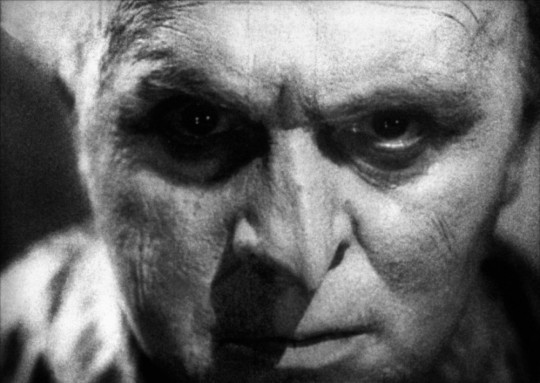
Rudolf Klein-Rogge in Dr. Mabuse the Gambler (Fritz Lang, 1922)
Cast: Rudolf Klein-Rogge, Aud Egede-Nissen, Gertrud Welcker, Alfred Abel, Bernhard Goetzke, Paul Richter, Robert Forster-Larrinaga, Hans Adalbert Schlettow, Georg John, Károly Huszár, Grete Berger, Julius Falkenstein. Screenplay: Thea von Harbou, Fritz Lang, based on a novel by Norbert Jacques. Cinematography: Carl Hoffmann. Art direction: Otto Hunte, Erich Kettelhut, Karl Stahl-Urach, Karl Vollbrecht.
Dr. Mabuse the Gambler is a four-and-a-half-hour movie, and I've seen two-hour movies that felt longer. It zips along because Fritz Lang never fails to give us something to look at and anticipate. There is, first and foremost, the almost literally hypnotic performance of Rudolf Klein-Rogge as Mabuse, a role that could have degenerated into mere villainous mannerisms. There is his dogged and thwarted but always charismatic opponent, von Wenk (Bernhard Goetzke), who seems on occasion to resist Mabuse's power by mere force of cheekbones. There is the extraordinary art decoration provided by Otto Hunte and Erich Kettelhut, which often gives the film its nightmare power: Consider, for example, the exceedingly odd stage decor provided for the Folies-Bergère performance by Cara Carozza (Aud Egede-Nissen), in which she contends with gigantic heads with phallic noses (or perhaps beaks), or the collection of primitive and Expressionist art belonging to the effete Count Told (Alfred Abel). The story itself, adapted from the novel by Norbert Jacques by Lang's wife-to-be Thea von Harbou, is typically melodramatic stuff about a megalomaniac psychiatrist, who uses his powers to become a master criminal. But l think it succeeds not only because it has so much to say about the period in which it was made but also because of our continuing fascination with mind control. It sometimes feels like there's a little Mabuse in everyone who seeks power. Somehow we continually lose our skepticism, born of hard experience, about the manipulators and find ourselves once again yielding to them. And somehow we usually, like von Wenk, find a way to pull ourselves back from the brink. But, as Lang himself experienced, we don't always manage to do so.
3 notes
·
View notes
Text
Dr. Mabuse the Gambler (Fritz Lang, 1922)
Cast: Rudolf Klein-Rogge, Aud Egede-Nissen, Gertrud Welcker, Alfred Abel, Bernhard Goetzke, Paul Richter, Robert Forster-Larrinaga, Hans Adalbert Schlettow, Georg John, Károly Huszár, Grete Berger, Julius Falkenstein. Screenplay: Thea von Harbou, Fritz Lang, based on a novel by Norbert Jacques. Cinematography: Carl Hoffmann. Art direction: Otto Hunte, Erich Kettelhut, Karl Stahl-Urach, Karl Vollbrecht.
Dr. Mabuse the Gambler is a four-and-a-half-hour movie, and I’ve seen two-hour movies that felt longer. It zips along because Fritz Lang never fails to give us something to look at and anticipate. There is, first and foremost, the almost literally hypnotic performance of Rudolf Klein-Rogge as Mabuse, a role that could have degenerated into mere villainous mannerisms. There is his dogged and thwarted but always charismatic opponent, von Wenk (Bernhard Goetzke), who seems on occasion to resist Mabuse’s power by mere force of cheekbones. There is the extraordinary art decoration provided by Otto Hunte and Erich Kettelhut, which often gives the film its nightmare power: Consider, for example, the exceedingly odd stage decor provided for the Folies-Bergère performance by Cara Carozza (Aud Egede-Nissen), in which she contends with gigantic heads with phallic noses (or perhaps beaks), or the collection of primitive and Expressionist art belonging to the effete Count Told (Alfred Abel). The story itself, adapted from the novel by Norbert Jacques by Lang’s wife-to-be Thea von Harbou, is typically melodramatic stuff about a megalomaniac psychiatrist, who uses his powers to become a master criminal. But l think it succeeds not only because it has so much to say about the period in which it was made but also because of our continuing fascination with mind control. It sometimes feels like there’s a little Mabuse in everyone who seeks power. Somehow we continually lose our skepticism, born of hard experience, about the manipulators and find ourselves once again yielding to them. And somehow we usually, like von Wenk, find a way to pull ourselves back from the brink. But, as Lang himself experienced, we don’t always manage to do so.










GERTRUDE WELCKER in DR. MABUSE, DER SPIELER (1922) dir. Fritz Lang
44 notes
·
View notes
Photo




Erich Kettelhut was a German production designer, art director and set decorator.
https://www.uow.edu.au/~morgan/Metrop.htm
https://thecharnelhouse.org/2014/04/18/the-metropolis-money-and-abstraction/torre-de-babel-em-desenho-de-erich-kettelhut/
https://thecharnelhouse.org/2014/04/18/the-metropolis-money-and-abstraction/erich-kettelhut-sketch-for-fritz-laings-metropolis-1925/
https://en.wikipedia.org/wiki/Erich_Kettelhut
https://twitter.com/peterpopkencom/status/935908207545016320
18 notes
·
View notes
Photo



“Dawn”, “City from Above with Tower of Babel”, and “Tower of Babel”: Concept art for Metropolis (1927) by Erich Kettelhut.
1K notes
·
View notes
Photo










Das indische Grabmal erster Teil (Joe May, 1921).
#das indische grabmal erster teil#joe may#mysteries of india part II: above all law#mysteries of india part i: truth#mysteries of india#thea von harbou#fritz lang#werner brandes#erich kettelhut#karl vollbrecht#otto hunte#martin jacoby-boy#das indische grabmal zweiter teil - der tiger von eschnapur#das indische grabmal erster teil - die sendung des yoghi#die sendung des yoghi#der tiger von eschnapur
91 notes
·
View notes
Photo
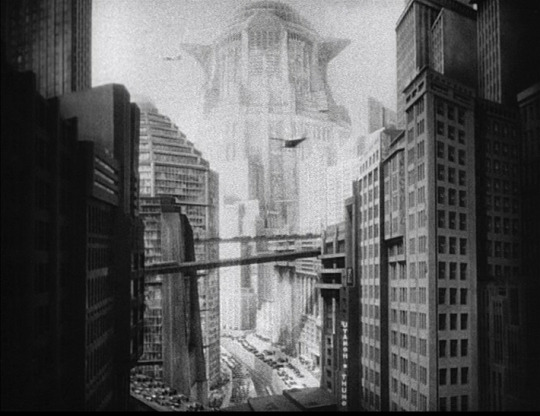
Metropolis
“Metropolis” n’est pas le premier film de Science Fiction, mais c’est celui qui a le plus déterminé le "look” de la ville du futur chez les cinéastes. Ce classique du genre étonne toujours par son inventivité et par sa démesure.
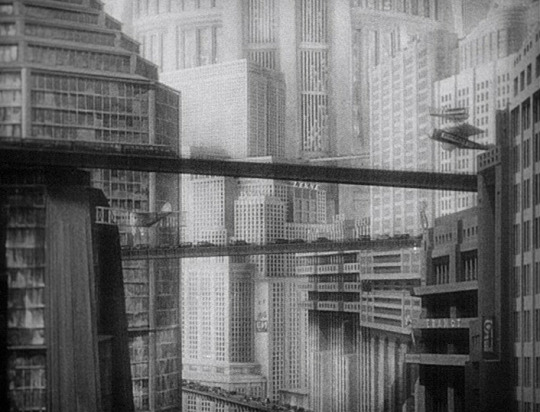
La ville est organisé verticalement avec des immeubles s’élevant jusqu’à 500 m et des passerelles qui aujourd’hui encore, font pâlir même un Rudy Ricciotti.
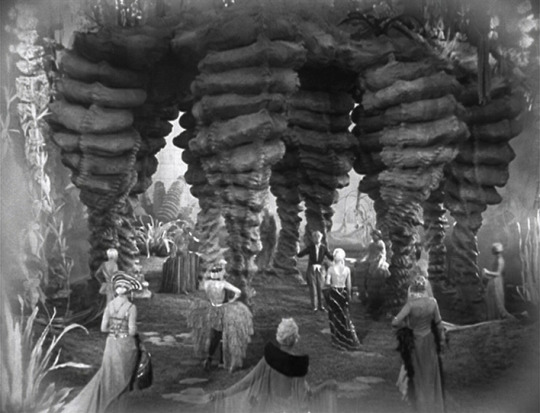
Elle parait d’abord comme utopique et agréable avec des vastes stades et des jardins paradisiaques à son sommet. Mais ces endroits sont réservé à une élite tiré sur le volet.
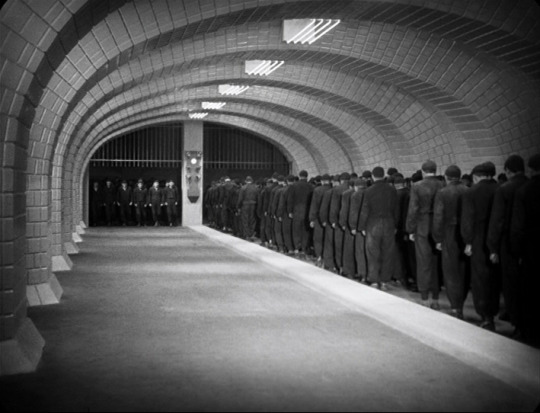
Puis le film montre son versant dystopique avec exploitation des travailleurs pauvres qui se tuent à la tache pour la faire fonctionner.
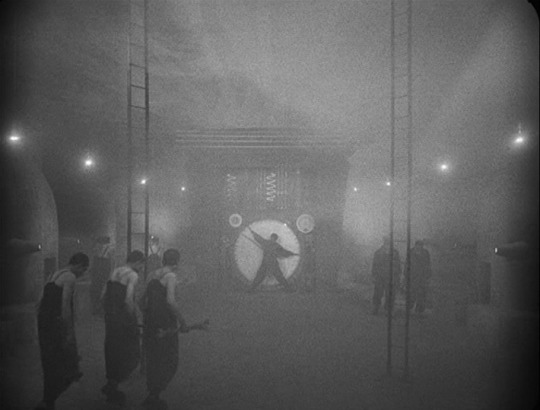
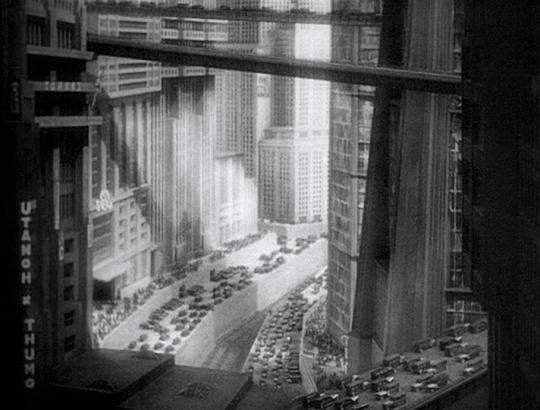
Entre les deux : la dynamique d’une ville en mouvement perpétuel qui se développe sur des plateaux multiples. Fritz Lang, fils d’architecte, a lui-même commencé des études d’architecture avant de faire des films et la ville qu’il crée à l’écran est le reflet de différents styles de son époque : la silhouette New-yorkaise, qu’il a vu impressionné en 1922 pour les plans large,
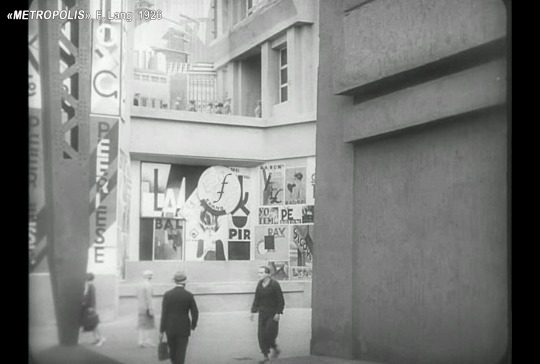
l’avant-garde russe et le Bauhaus pour les plans rapprochés. Ce mélange de styles souligne le côté cosmopolite de la ville, ��galement renforcé par les multiples affiches, écrites dans des langues fantaisistes.
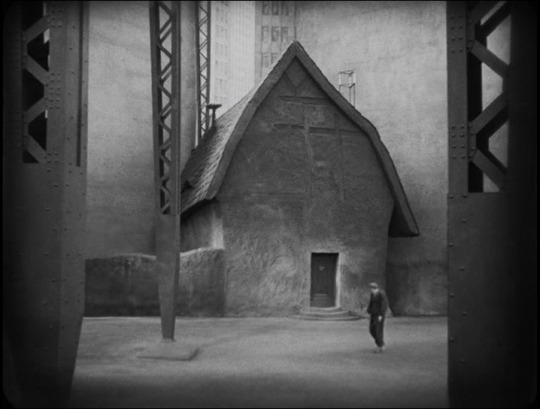
Même l’expressionnisme à la « Caligari » trouve sa place dans la maison biscornue qu’abrite l’inventeur et savant fou Rotwang (Rudolf Klein-Rogge). L’importance des poteaux métalliques élancés, qui soutiennent passerelles et autoroutes, souligne le savoir faire de l’ingénieur, omniprésent dans la cité futuriste.
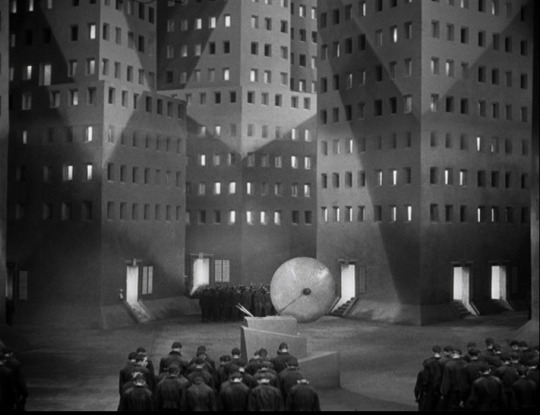
Fritz Lang n’hésite pas à caricaturer la condition des ouvriers lobotomisés dans leurs cages à lapins souterrains, sans se douter que cette architecture systématisée et impersonnelle deviendra une réalité dans certaines banlieues des années 60/70.
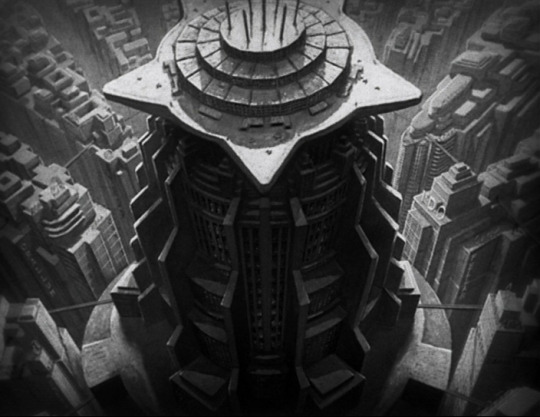
Grace à sa richesse visuelle, “Metropolis” est devenue le modèle-type de la ville du futur. Metropolis est l’Eden pour les riches et l’enfer pour les démunies ; l’utopie et la dystopie en même temps.
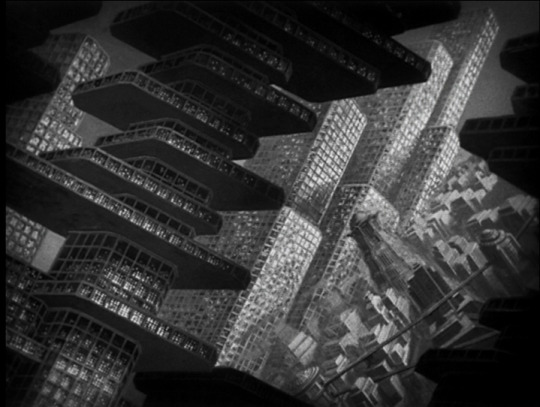
Département artistique : Otto Hunte, Erich Kettelhut, Walter Schulze-Mitteldorff, Karl Vollbrecht, Edgar G. Ulmer / Décors : Willy Müller / Effets combinés : Eugen Schüfftan
METROPOLIS 1926 Fritz Lang
0 notes
Photo










Metropolis (1927)
“...and where are the people, father, whose hands built your city?”
Country: Germany
Directed by: Fritz Lang
Written by: Lang & Thea von Harbou Based on the novel by: von Harbou
Cinematography by: Karl Freund, Günther Rittau & Walter Ruttmann
Produced by: Erich Pommer
Music by: Gottfried Huppertz
Art Direction by: Karl Vollbrecht, Otto Hunte & Erich Kettelhut
#Metropolis#Movie#Germany#Fritz Lang#Thea von Harbou#Karl Freund#Günther Rittau#Walter Ruttmann#Erich Pommer#Gottfried Huppertz#Karl Vollbrecht#Otto Hunte#Erich Kettelhut#Paramount Pictures#Kino Lorber#Reel Media International#1920s#Sci-Fi#Drama#Expressionism
4 notes
·
View notes
Photo





Metropolis
Directed by Fritz Lang (1927) Art direction led by Otto Hunte, with Erich Kettelhut and Karl Vollbrecht
13 notes
·
View notes
Photo

Sketch by Erich Kettelhut for Metropolis directed by Fritz Lang, 1927
1K notes
·
View notes
Photo

Erich Kettelhut and Fritz Lang
Set design drawing for “The Nibelungen: The Death of Siegfried (Die Nibelungen: Siegfrieds Tod)” 1923
(via Art Blart)
8 notes
·
View notes